 Built for COMSAT (Communications Satellite Corporation) by Hughes Aircraft, borrowing heavily from the design of the successful Syncom experimental satellites earlier in the decade, Intelsat I is launched into a geosynchronous orbit over the Atlantic Ocean, providing telephone, TV, and fax communication via satellite between the United States and Europe. Intelsat I, nicknamed “Early Bird”, doesn’t go operational until COMSAT has completed diagnostics and engineering tests; its first operational use is in June 1965. It will provide satellite transmission of the first live TV coverage of a returning space mission (the splashdown of Gemini 6 in December 1965), and it will be an integral part of the international satellite links necessary for the Our World broadcast in 1967. Despite being retired from regular use in January 1969, it will be reactivated in June 1969 to handle some of the television coverage of the first lunar landing.
Built for COMSAT (Communications Satellite Corporation) by Hughes Aircraft, borrowing heavily from the design of the successful Syncom experimental satellites earlier in the decade, Intelsat I is launched into a geosynchronous orbit over the Atlantic Ocean, providing telephone, TV, and fax communication via satellite between the United States and Europe. Intelsat I, nicknamed “Early Bird”, doesn’t go operational until COMSAT has completed diagnostics and engineering tests; its first operational use is in June 1965. It will provide satellite transmission of the first live TV coverage of a returning space mission (the splashdown of Gemini 6 in December 1965), and it will be an integral part of the international satellite links necessary for the Our World broadcast in 1967. Despite being retired from regular use in January 1969, it will be reactivated in June 1969 to handle some of the television coverage of the first lunar landing.

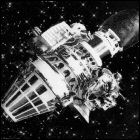 Following two years of aborted or otherwise unsuccessful attempts to launch another robotic lunar lander toward the moon, the Soviet Union sends Luna 5 on its way. Intended to be an automated soft-landing mission, Luna 5 encounters major technical problems as it coasts from Earth to the moon. It does eventually reach the moon, but does so out of control and unable to brake for a survivable landing; the plume of material created by the impact of the 3,000-pound Luna 5 is large enough to be spotted from Earth-based telescopes for several minutes.
Following two years of aborted or otherwise unsuccessful attempts to launch another robotic lunar lander toward the moon, the Soviet Union sends Luna 5 on its way. Intended to be an automated soft-landing mission, Luna 5 encounters major technical problems as it coasts from Earth to the moon. It does eventually reach the moon, but does so out of control and unable to brake for a survivable landing; the plume of material created by the impact of the 3,000-pound Luna 5 is large enough to be spotted from Earth-based telescopes for several minutes.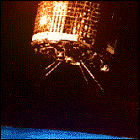 NASA and the United States Weather Bureau launch the tenth and final experimental TIROS weather satellite, TIROS-10. Continuing to test technological upgrades for a fully-functional weather satellite fleet, TIROS-10 also provides additional coverage during hurricane seasons, and remains operational for exactly two years, at which point NASA begins a planned shutdown and phase-out of the experimental TIROS satellites in favor of the Nimbus and ESSA weather satellites.
NASA and the United States Weather Bureau launch the tenth and final experimental TIROS weather satellite, TIROS-10. Continuing to test technological upgrades for a fully-functional weather satellite fleet, TIROS-10 also provides additional coverage during hurricane seasons, and remains operational for exactly two years, at which point NASA begins a planned shutdown and phase-out of the experimental TIROS satellites in favor of the Nimbus and ESSA weather satellites. Mariner 4 successfully passes by Mars at a distance of just over 6,000 miles, and transmits the first direct measurements of the Martian environment to Earth, along with the first pictures ever taken of another planet from a nearby spacecraft. Mariner 4’s onboard instruments detect a thin atmosphere – thin enough that any future landing attempts will need to descend on retro rockets, but thick enough that a heat shield is still necessary. These findings have a ripple effect on
Mariner 4 successfully passes by Mars at a distance of just over 6,000 miles, and transmits the first direct measurements of the Martian environment to Earth, along with the first pictures ever taken of another planet from a nearby spacecraft. Mariner 4’s onboard instruments detect a thin atmosphere – thin enough that any future landing attempts will need to descend on retro rockets, but thick enough that a heat shield is still necessary. These findings have a ripple effect on  The Soviet Union launches Zond 3, an unmanned spacecraft nearly identical to the failed Mars-bound space probe Zond 2, on a trajectory that will swing past the moon on its way to interplanetary space. It would make its closest flyby to the moon on July 20th, 1965, four years to the day prior to the first manned lunar landing, taking photos of the far side of the moon as it heads into deep space. Zond 3 proceeds on a trajectory toward the orbit of Mars, even though it will be too far away from the planet to study it.
The Soviet Union launches Zond 3, an unmanned spacecraft nearly identical to the failed Mars-bound space probe Zond 2, on a trajectory that will swing past the moon on its way to interplanetary space. It would make its closest flyby to the moon on July 20th, 1965, four years to the day prior to the first manned lunar landing, taking photos of the far side of the moon as it heads into deep space. Zond 3 proceeds on a trajectory toward the orbit of Mars, even though it will be too far away from the planet to study it.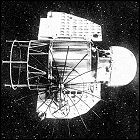 The Soviet Venera 2 space probe is launched toward Venus, and for the first time cameras are placed aboard a vehicle bound for that planet. Venera 2 will eventually pass within 14,000 miles of its target, but electrical failures silence the space probe and its instruments long before the flyby.
The Soviet Venera 2 space probe is launched toward Venus, and for the first time cameras are placed aboard a vehicle bound for that planet. Venera 2 will eventually pass within 14,000 miles of its target, but electrical failures silence the space probe and its instruments long before the flyby.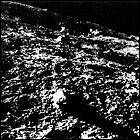 The Soviet Union lands a palpable hit in the space race, claiming the first intact soft-landing of a man-made probe on another body in the solar system.
The Soviet Union lands a palpable hit in the space race, claiming the first intact soft-landing of a man-made probe on another body in the solar system.  The recently-rechristened Environmental Sciences Service Administration (previously the U.S. Weather Bureau) launches, with the help of NASA, the first “Operational TIROS” weather satellite, ESSA-1. Based on the architecture of the later TIROS satellites, this is intended to be the first fully-operational, long-life weather satellite, in the tradition of many of the long-lived TIROS weather satellites. But eight months into its operational lifetime, ESSA-1’s on board camera system fails, rendering it blind – it becomes useless as a weather satellite and is kept online for engineering experiments until spring 1967.
The recently-rechristened Environmental Sciences Service Administration (previously the U.S. Weather Bureau) launches, with the help of NASA, the first “Operational TIROS” weather satellite, ESSA-1. Based on the architecture of the later TIROS satellites, this is intended to be the first fully-operational, long-life weather satellite, in the tradition of many of the long-lived TIROS weather satellites. But eight months into its operational lifetime, ESSA-1’s on board camera system fails, rendering it blind – it becomes useless as a weather satellite and is kept online for engineering experiments until spring 1967.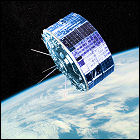 The recently-rechristened Environmental Sciences Service Administration (previously the U.S. Weather Bureau) launches, with the help of NASA, weather satellite ESSA-2, intended to be the second in a constellation of spaceborne observers of Earth’s weather. Virtually identical to ESSA-1, ESSA-2 monitors Earth’s cloud cover for over four years; it is decommissioned in
The recently-rechristened Environmental Sciences Service Administration (previously the U.S. Weather Bureau) launches, with the help of NASA, weather satellite ESSA-2, intended to be the second in a constellation of spaceborne observers of Earth’s weather. Virtually identical to ESSA-1, ESSA-2 monitors Earth’s cloud cover for over four years; it is decommissioned in  The Soviet Union launches unmanned space probe Luna 10 toward the moon, where it becomes the moon’s first artificial satellite. Luna 10 remains functional for two months, during which a pre-recorded signal from it becomes one of the highlights of the 23rd Congress of the Soviet Communist Party. Luna 10 does not take photos of the moon from orbit, but does find varying concentrations of mass within the lunar surface. This is the last of the original “large” Luna probes, with later orbiters taking on a more compact form, and later large Luna probes containing landers and sample return rockets.
The Soviet Union launches unmanned space probe Luna 10 toward the moon, where it becomes the moon’s first artificial satellite. Luna 10 remains functional for two months, during which a pre-recorded signal from it becomes one of the highlights of the 23rd Congress of the Soviet Communist Party. Luna 10 does not take photos of the moon from orbit, but does find varying concentrations of mass within the lunar surface. This is the last of the original “large” Luna probes, with later orbiters taking on a more compact form, and later large Luna probes containing landers and sample return rockets. NASA launches its first space-based telescope, the unmanned Orbiting Astronomical Observatory satellite, into Earth orbit. Weighing nearly two tons and sporting visible, ultraviolet, X-ray and gamma ray astronomy capabilities, OAO is in trouble mere minutes after it goes into service: a serious electrical failure leaves the spacecraft in a blind tumble, and it will be declared a loss three days after launch. NASA will attempt another OAO launch in 1968.
NASA launches its first space-based telescope, the unmanned Orbiting Astronomical Observatory satellite, into Earth orbit. Weighing nearly two tons and sporting visible, ultraviolet, X-ray and gamma ray astronomy capabilities, OAO is in trouble mere minutes after it goes into service: a serious electrical failure leaves the spacecraft in a blind tumble, and it will be declared a loss three days after launch. NASA will attempt another OAO launch in 1968.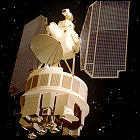 NASA launches the Nimbus 2 satellite, designed to observe weather patterns from orbit and test new weather and climate detection technologies. Nimbus 2’s only means of data storage fails within weeks, and that system’s only backup fails later in the year. Nimbus 2 is shut down in 1969 when the system it uses to maintain orientation to Earth’s horizon also fails.
NASA launches the Nimbus 2 satellite, designed to observe weather patterns from orbit and test new weather and climate detection technologies. Nimbus 2’s only means of data storage fails within weeks, and that system’s only backup fails later in the year. Nimbus 2 is shut down in 1969 when the system it uses to maintain orientation to Earth’s horizon also fails. NASA’s first attempt to soft-land an unmanned space probe on another body in the solar system ends with a perfect landing:
NASA’s first attempt to soft-land an unmanned space probe on another body in the solar system ends with a perfect landing:  The first of five
The first of five  The Soviet Union launches unmanned space probe Luna 11 toward the moon, the first of a new, smaller generation of Luna probes designed to survey the moon from orbit. Unlike its predecessor, Luna 11 is equipped with cameras, and like NASA’s Lunar Orbiter, Luna 11 is tasked with mapping the moon in advance of a presumed attempt to land cosmonauts there. However, an attitude control problem points Luna 11’s cameras away from the moon, unable to transmit useful imagery back to Earth. Luna 11 remains functional in orbit of the moon for six weeks.
The Soviet Union launches unmanned space probe Luna 11 toward the moon, the first of a new, smaller generation of Luna probes designed to survey the moon from orbit. Unlike its predecessor, Luna 11 is equipped with cameras, and like NASA’s Lunar Orbiter, Luna 11 is tasked with mapping the moon in advance of a presumed attempt to land cosmonauts there. However, an attitude control problem points Luna 11’s cameras away from the moon, unable to transmit useful imagery back to Earth. Luna 11 remains functional in orbit of the moon for six weeks.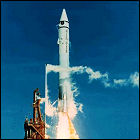 Three days after lifting off from Earth, NASA’s
Three days after lifting off from Earth, NASA’s 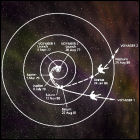 The Grand Tour Outer Planets mission is proposed to NASA by the Jet Propulsion Laboratory. Using a combination of the gravitational assist trajectories computed by JPL’s Michael Minovitch in
The Grand Tour Outer Planets mission is proposed to NASA by the Jet Propulsion Laboratory. Using a combination of the gravitational assist trajectories computed by JPL’s Michael Minovitch in 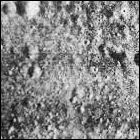 The Soviet Union launches unmanned space probe Luna 12 toward the moon, a near-identical twin of the earlier Luna 11 spacecraft. Luna 12 returns images and observations from lunar orbit for three months until its batteries are exhausted.
The Soviet Union launches unmanned space probe Luna 12 toward the moon, a near-identical twin of the earlier Luna 11 spacecraft. Luna 12 returns images and observations from lunar orbit for three months until its batteries are exhausted.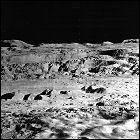 The second in NASA’s series of
The second in NASA’s series of 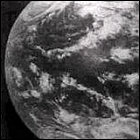 NASA launches Aplications Technology Satellite-1, the first of a new series of experimental satellites with a goal of combining the functions of existing weather and communication satellites, with other technology demonstrations added on. ATS-1 transmits the first-ever view of the entire face of Earth visible from geosynchronous orbit, as well as testing some of the first satellite navigation technology. ATS-1’s position in orbit also proves ideal for the North-America-to-Australia link during 1967’s global Our World broadcast. ATS-1 remains in serice for almost exactly 12 years.
NASA launches Aplications Technology Satellite-1, the first of a new series of experimental satellites with a goal of combining the functions of existing weather and communication satellites, with other technology demonstrations added on. ATS-1 transmits the first-ever view of the entire face of Earth visible from geosynchronous orbit, as well as testing some of the first satellite navigation technology. ATS-1’s position in orbit also proves ideal for the North-America-to-Australia link during 1967’s global Our World broadcast. ATS-1 remains in serice for almost exactly 12 years.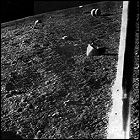 The Soviet Union launches unmanned space probe Luna 13 toward the moon, where it becomes the third space vehicle to successfully make a soft landing on the lunar surface. Larger than its Soviet predecessor, Luna 9, Luna 13 measures the temperature, radiation, and hardness of the moon’s surface, all useful information to have in advance of a manned landing. After operating on the lunar surface for four days, the Luna 13 lander’s batteries are exhausted and the mission is over.
The Soviet Union launches unmanned space probe Luna 13 toward the moon, where it becomes the third space vehicle to successfully make a soft landing on the lunar surface. Larger than its Soviet predecessor, Luna 9, Luna 13 measures the temperature, radiation, and hardness of the moon’s surface, all useful information to have in advance of a manned landing. After operating on the lunar surface for four days, the Luna 13 lander’s batteries are exhausted and the mission is over. The third of five Lunar Orbiter satellites is launched to the moon by NASA, and once in orbit,
The third of five Lunar Orbiter satellites is launched to the moon by NASA, and once in orbit,  NASA’s robotic explorer
NASA’s robotic explorer